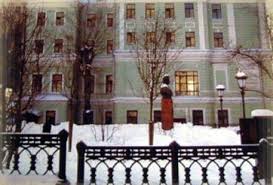LCHC Joint Research with Soviet Educationalists
The Velikhov–Hamburg Project (VelHam for short) linked American and Soviet scholars whose research focused on how to use then-new PCs in elementary schools (See LCHC’s VelHam report). It was named after David Hamburg, then president of the Carnegie Corporation of New York, and Evgenii Velikhov, Mikhail Gorbachev’s science advisor (as well as a physicist, entrepreneur, and advocate of the American human potential movement. The VelHam project was designed as a mode of enabling international scholarly understanding and as a model of how to engage in joint scholarly research across tense political and national boundaries.
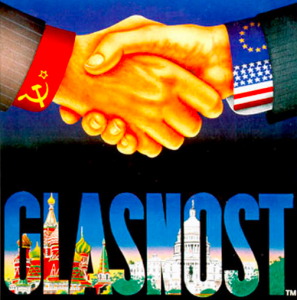
The overall project was carried out in two broad stages, the first of which began in the fall of 1985 and ended in the winter of 1990. The efforts of the VelHam participants to promote international discussion among scholars operated within the Institute of Psychology (Soviet Academy of Sciences). Alexandra (Sasha) Belyaeva, a psycholinguist at the Institute, acted as the operational project coordinator on the Russian side. Sasha and her research colleagues were responsible for facilitating international communication with Soviet scholars in partner institutions and for conducting research about children and computers. Mike Cole and LCHC played an analogous role on the US side.
The first stage of the project focused on building new forms of educational activity for school-aged children using computers and computer networks as the principle medium of their activity. In this work, the US and the USSR were linked via the common object of the 5th Dimension (5thD), the beginnings of which were described in Chapter 7 and Chapter 9 (For an extensive report written at the time, see Velham Report).
The second stage of the VelHam project began not long before the fall of the USSR and concluded in 1994. In this second stage, the focus shifted away from joint international research focused on educational activity in after school clubs. It reoriented towards joint collaboration between Soviet and American scholars from all of the social sciences using email as a medium of intra- and inter- national scholarly work. 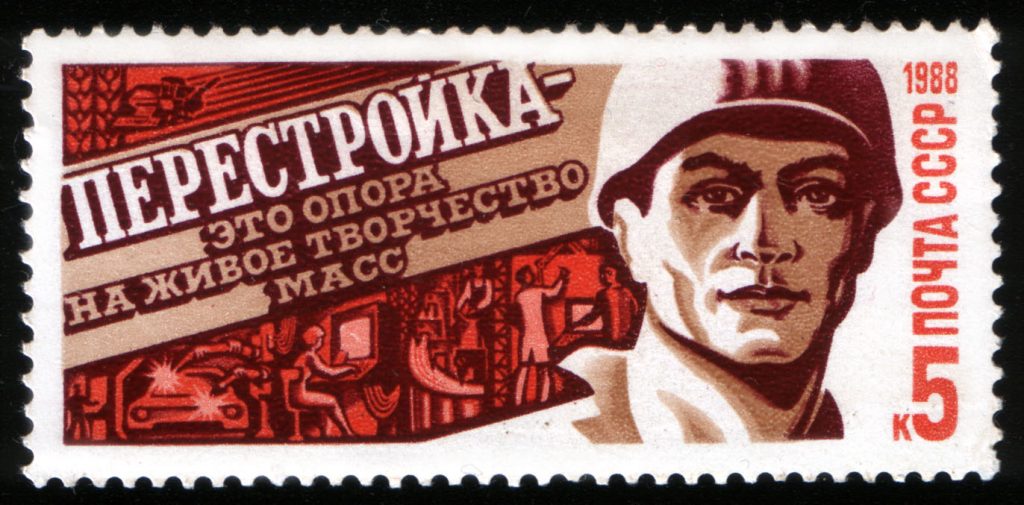 As the twin processes of glasnost (openness) and perestroika (restructuring) intensified, the scope of this second project grew from its initial start as a small effort to introduce e-mail into a few selected institutes into a much larger flood of new ties between Russia and the rest of the world.
As the twin processes of glasnost (openness) and perestroika (restructuring) intensified, the scope of this second project grew from its initial start as a small effort to introduce e-mail into a few selected institutes into a much larger flood of new ties between Russia and the rest of the world.
This chapter follows the story of the larger, diplomatic and international communication aspects of the project. The lessons learned concerning the organization of joint activity among children using computers based on the 5thD can be found in Chapter 9.
A Pre-History of VelHam
For a substantial part of the 20th century, direct collaboration between American and Soviet scholars was, at best, a rare occurrence. When interaction occurred, it most often came in the form of infrequent, brief visits for seminars or international congresses. Lengthy research visits were far less common. While these limitations created barriers for ongoing collaborative research, they did not completely foreclose the possibility of scholarly exchange.
Spacebridges and the Human Potential Movement: Important Precursors and Fraught Relations
As described in earlier chapters, in the early 1980s, LCHC had begun to engage with issues of computer-mediated communication, particularly its role as a new form of educational activity among school children. When he led a delegation to a symposium on theories of development in the early summer of 1983, Mike took along a computer disk containing a copy of the Shark Game (see Chapter 7) created by Jim Levin in hopes of organizing more formalized, extended forms of joint research around such objects.
While Mike concerned himself with official exchange business, his wife, Sheila, a journalist, sought an interesting story to work on. Her search lead her to connect with the members of “family clubs,” a new Soviet social movement. The overall motivation for these clubs, it turned out, was to create a way of raising their children that would blunt the impact of the daily grind in the authoritarian bureaucracies of school, office, and shop floor by providing more humane forms of interaction.
Sheila’s research showed that the ideas of the Esalen Institute in California, which ran a program of workshops and retreats aimed at increasing life satisfaction through self-actualization, reflected a connection between Soviet and American human potential movements. Adding to the potential of the Esalen program was its emphasis on the promise of telecommunication technologies to help create new possibilities for peaceful international interaction, and its already established Soviet-American Exchange program. As early as 1982, the Esalen program had conducted video exchanges, which they called spacebridges, between Moscow and the US.
The reaction by all involved, but by Velikhov in particular, had been sheer astonishment at the power of this new medium. In one memorable moment, Velikhov inadvertently initiated a Moscow/California coordinated wave of bi-national acclaim by commenting that nuclear weapons were a cancer on the body of humanity. The dynamics of the interaction were mesmerizing. The seed of an idea had been planted.
In a series of hastily arranged and chaotic meetings, the Soviets proposed a new spacebridge to coincide with a film festival in Moscow that had a special category of films for children. Why not create a Spacebridge on this topic involving matched pairs of Moscow and Hollywood filmmakers? With the broad sketch of a plan for such a spacebridge in place (the Soviets agreed to pay for production costs on their side and pick up 50% of the satellite costs), Mike and Sheila returned to New York to try to make the idea come to fruition in only a few weeks.
Ultimately, the spacebridge took place with support from the Carnegie Corporation, the Lounsbery Foundation, and an immense volunteer effort in San Diego and Moscow. A one-hour program aired nationally on Soviet Television, and a half-hour version entitled “Moscow Calling San Diego” was shown on PBS in the US.
Several lessons from this experiment stood out as important. At a basic level, the spacebridge demonstrated that these new and comparatively inexpensive telecommunication technologies could, in fact, create forms of Soviet-American communication between citizens in a way that was acceptable to officials in both countries. More broadly, the spacebridge offered fascinating moments when the children in the two countries seemed either indistinguishable or totally different. For example, when the camera focused on individual faces of boys and girls raptly watching as the Prince approached the Sleeping Beauty on her bed, it was impossible distinguish Russian and American children. However, when the camera pulled back to reveal differences in dress and to contrast the general style of the way the children responded to questions about their interpretations of the film fragments they watched, national/cultural differences were overwhelmingly evident. Interesting as this spacebridge was, it should be kept in mind these interactions were observed with great suspicion by authorities on both sides, highly regulated, and relatively expensive.
From Spacebridging to VelHam
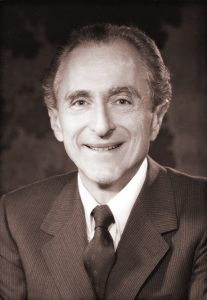
Hamburg
After this foray into the spacebridge as a platform for international collaboration, Mike returned to his initial interest in using computer networking for the purpose of collaborative research. At the time, computer networking was still a new phenomenon, and the “store-and-forward” email systems in those early, pre-internet days were not well connected with each other, with the exception of those created and maintained by the military. But, by patching together various pathways that mixed the store-and-forward e-mail systems based on university mainframes with private satellite facilities, it seemed technically possible to conduct the same sort of work with Moscow that LCHC was conducting with people in other parts of the world. The political problems were more acute.
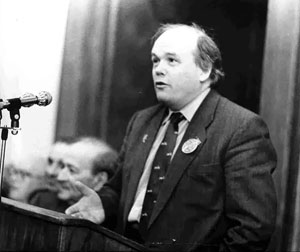
Velikhov
In March of 1985, David Hamburg went to Moscow to participate as a member of a bi-national Committee on International Security and Arms Control set up by the National Academy of Sciences in Washington and the Soviet Academy of Sciences. The chairman of the Soviet counterpart committee was Evgenii Velikhov. In a private conversation with Velikhov, Hamburg inquired about the kinds of problems that were likely to interest the new generation of Soviet leaders and ways in which leaders in the US and USSR might take advantage of the new situation to promote mutual understanding and cooperation. Velikhov identified the need of all advanced industrialized countries to deal with the accelerating scientific and technological changes that were then occurring as a common problem. He specifically emphasized the need to introduce knowledge about computers into the schools as a topic of special concern. The two men agreed to pursue this theme by an exchange of relevant scholars, beginning with a visit from a US delegation to see what the Russians were doing in this field. The basic conditions for the development of the VelHam project had come into being.
The agreement, in its simplest terms, was that the Americans would get access to Russian pedagogical methods in the area of mathematics and science education, while the Russians were interested in the relations of the emerging digital technologies to what many saw as the pending reorganization of educational, digitalized, differently distributed activity. With these basic conditions for the development of the VelHam project in place, actual joint activities involving real scientists and real kids got under way over the subsequent year.
VelHam Stage 1
As a follow up, Hamburg arranged for a delegation representing Carnegie, including Fritz Mosher from Carnegie and Mike Cole, to travel to Moscow to meet with Velikhov and formulate a concrete project. Official Moscow was a beehive of activity. There was a real sense of urgency. Gorbachev’s efforts to create and implement a policy of glasnost and perestroika were on everyone’s lips. To some extent, both openness (glasnost) and restructuring (perestroika) were evident. People spoke about a “period of stagnation” during the early 1980s. Gorbachev was making the “transformation of the material and technical basis of production” the center plank in his program of reform (Pravda, April 12, 1985). Particularly relevant to our own plans, there was growing awareness of the critical need to bring the USSR into the computer age.
At the time of the delegation’s visit, Velikhov was actively working to build the needed infrastructure, but his resources were grossly insufficient for the task. He hoped that the meeting with Hamburg’s delegation would produce a joint project in which Carnegie could offer both expertise and equipment.
The American delegation brought a different set of expectations to the project. While some bans on the transfer of computer technology had been lifted by the Reagan administration, deliberate technology transfer was not only barred by specific legislation, it was considered akin to treason. Against this backdrop of legal constraint, the Americans focused on how to apply promising Russian pedagogical theories to the introduction of computers for American school children. The Russians were, in effect trading their expertise in designing effective pedagogical settings for experience with contemporary computer and communications technologies used for educational purposes. Both sides argued to their respective sponsors that they had a common interest in the educational challenge — both had something to contribute to each other.
These concerns came together to shape the nature of the proposal that we arrived in Moscow prepared to make. First, we were determined that we would not get involved in technology transfer or one-way transfer of resources in general. To avoid even the appearance of asymmetrical advantage, the project needed to be predicated on full reciprocity, like the spacebridge project we had put together two years earlier. Second, we needed to focus on younger children in order to use non-embargoed technology and to focus on an area of genuine concern to American educators for which we had relevant research evidence and hunches about productive new lines of inquiry.
We also placed a strong emphasis on the ways in which American educators and developmentalists could benefit from interacting with their Soviet colleagues. One area of promised benefits was access to the ideas of internationally respected developmental/pedagogical theorists who were exciting interest among American psychologists and educationalists. A second benefit was the experience to be gained from seeing how Soviet educationalists dealt with the shortcomings of computerization that our nation had already encountered. We hoped to learn a good deal more about the processes of educational reform and computerization at the same time—lessons that we could then apply to our own circumstances.
The vastly different cultural traditions, historical experiences, and world positions of the two sides provided the framework for the discussions that transpired during our visit. The challenge was to come up with an agreement that satisfied both Soviet and American goals and constraints.
The American proposal was for the bi-national team to organize several groups of school children in locations across the US and the Soviet Union who, following a model of prior experience at LCHC, would “share experimental software and engage in activities specially designed to promote the development of basic academic skills in math, science, computer programming, ecology, and other subject matters.” At the level of research, project researchers would design, implement, and evaluate activities together.
By the fall of 1986, after a great many conversations to figure out how to proceed, the American side of operations developed a formal proposal outlining specific (seemingly feasible) goals for the VelHam project. In the US, work with children would occur at four sites: one in Boston, coordinated by Sarah Michaels; two in New York, coordinated by Denis Newman and Laura Martin at Bank Street and by Pedro Pedraza and Seth Chaiklin at Hunter College; and one at UCSD, which was also responsible for providing email access to Russian colleagues and coordinating US activities.
Over the next two years, the basic plan put forward by the US side was operationalized: joint experiments by developmentalists took place on a regular basis, and the data served as material for joint publications.
In the first of a series of planned studies, two summer camp sessions were arranged, one near Moscow and the other in San Diego. The sessions were made possible in large part due to the tremendous effort of Peg Griffin, with help from Jerry Balzano from LCHC. The US team proposed, and the Soviet side accepted, a structure involving a set of computer-based activities drawing heavily on software that had already been the object of group discussion and shared with Russian counterparts. During and after each session, children worked locally on the computer activities arranged for them by the adults, and they engaged in correspondence with the children in the other country.
The kid-kid correspondence quickly moved beyond the limits of the games (notes reporting on their successes, challenging each other to match various levels of achievement, etc.). Soon, the children began to engage in more personal exchanges such as sharing riddles, poems, comparisons of favorite objects, and so on. The adult discussions were also successful. Scholars on the two sides negotiated a wide range of topics, including the strengths and weaknesses of various software packages, the best ways of organizing interactions between the children and particular games, and ways to take advantage of telecommunications to stimulate children’s active engagement in learning and communicating.
Slideshow
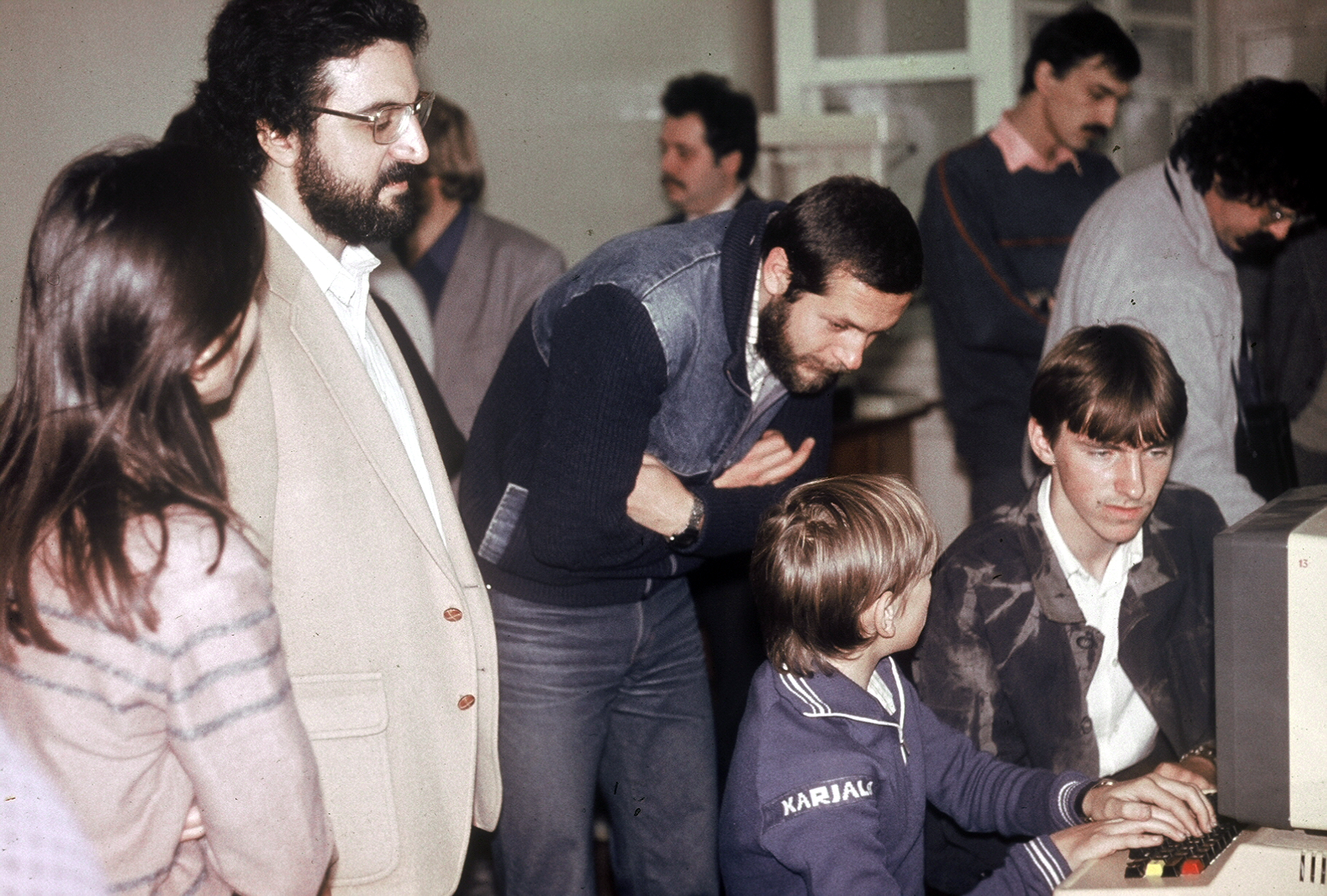
Summer Camp at Pereslavl
Most importantly, the summer camp operationalized the basic thesis of the project for the very first time: When properly organized, American and Soviet researchers could cooperate as professionals to address common theoretical and practical problems of computer-mediated education in a way that each side saw as scientifically useful. Another added benefit was that the summer experiment was sufficiently promising to convince Carnegie to scale up the project. This was good news all around.
Following the summer project, however, serious issues in how to organize a next level of activity in the USSR arose. It did not take the US team long to realize that despite the good intentions of their Soviet counterparts, they confronted significant difficulties in sorting out the project’s resources, technical problems, control, and organization. The months following the summer camp were preoccupied with wrangles about who would participate on each side and under what auspices. A patchwork of different institutional rearrangements on the Soviet side and analogous adjustments on the American side allowed the work to go ahead, but in a greatly narrowed fashion.
As early as the summer of 1988, it was clear that the problems undermining the team’s efforts at creating a stable, collaborative structure were not going away any time soon. The strategy for organizing VelHam as an addition to existing, higher visibility research projects in various parts of the country was not working. At this point, either it seemed that the VelHam project needed to be abandoned entirely or the team had to come up with a more modest structure that could be supported on both sides.
We were strongly in favor of the latter.
In the fall of 1988, it seemed we might have a solution when Sasha Belyaeva proposed the creation of an after-school club in which the children had access to telecommunications, similar to clubs that had been running at LCHC for several years. Using the Communications Laboratory at the Institute of Psychology and her own living room as a “secure base,” Sasha could include additional partners without being wholly dependent upon them.
As for the joint, bi-national collaborative component of the project, it narrowed to Pedro Pedraza and Seth Chaiklin in New York who ran a successful after-school club in East Harlem built around principles common to both sides (Chaiklkin & Hedegaard, 2005). Also joining was Gillian McNamee at the Erikson Institute in Chicago and Katherine King at the University of New Orleans (both once members of LCHC), who ran after school activities closely modeled on the 5thD, along with LCHC, which ran a special 5thD designed to provide great flexibility in coordinating with the other parallel activities afar. Our initial potential partners pursued their own connections with different parts of Velikhov’s network of partnership enterprises.
By the beginning of the 1990-1991 academic year, we felt that we had achieved the core goals that originally motivated American involvement in the VelHam project. Researchers in both countries had demonstrated that they could cooperate with each other on behalf of the children while still addressing the theoretical questions that demanded empirical testing through research. We had also begun to present our work in a variety of arenas. Notably, we presented at a 1989 NATO sponsored meeting on communication and cognition in Leningrad; a special issue of the LCHC Newsletter in the same year, which was devoted to papers growing out of the project; publications in the translation journal, Soviet Psychology; and three Ph.D. theses based on different aspects of the research.
Mike’s comments at end of his report to Carnegie ring true in today:
It is difficult for me to gauge how well [the project] met Hamburg’s aspirations. In so far as the symbolic goal of demonstrating the possibility of cooperation took priority, his aspirations were achieved. Thanks to Sasha’s persistence and perseverance in the face of diminishingly small amounts of financial assistance and her ingenuity in finding a way to get Soviet children involved in the project, real children engaged in real international communication and genuine joint scientific work took place. However, by virtue of the convoluted way in which this work was organized and its small scale, it could have little resonance in either Soviet or American education. That our collaborative research did not revolutionize American education does not distinguish it from any of the other, more visible, research efforts of that day or this: despite enormous hype, the computerization of American education remains just over the horizon of our national experience.
Velham Stage 2: Introducing Open Access E-Mail: From A Sequestered Project to the Social Science Division of the Russian Academy of Sciences (1990-1994)
By the late 1980s, we had made our point with the 5thD. Genuine, reciprocal research could be organized and scientists could cooperate across almost-warring countries for the common good. Now the research challenge shifted to dissemination of the internet among scientists more broadly to provide them the same resources for cooperative research we had been seeking to model. What sorts of conditions would allow others to do what we had done, in their own ways, using the same technology of the budding internet? In parallel, there was an ongoing institutional struggle, within the emerging new Russian social order, to figure out how Sasha Belyava’s Communication Laboratory (ComLab) and other organizations like it could find institutional homes. This latter side of the project is discussed in some detail in the Velham Report.
It is important to remember that the Velham project was so sensitive when it began in 1985 that only Soviet scholars with special clearance were allowed to use the existing email access. Checking email required a daily trip to the Institute of Automated Systems (IAS), which was the only point of legal contact. Beyond Sasha’s research group at the ComLab, the use of email for such purposes was virtually unknown even among the highest officials of Soviet science. Velikhov, himself, was heavily influenced by the experiences of his son in the 5thD at the local youth club – writing to American kids and getting answers the next day. Only those charged with developing the country’s first militarily oriented intranet, our colleagues at the IAS understood the full implications of what the internet entailed for the Soviet order of that day. Without their participation, no communication would take place.
Only a few members of Sasha’s own group had such clearance, and all communication with other developmental psychologists who shared our interest in issues of development and instruction was done by having them type out their messages, which had to be relayed by Sasha’s staff and retyped as an electronic file. Use of the internet was a very fraught affair for our Soviet colleagues.
In the course of the 5thD-centered stage of the project, these problems were solved for Sasha’s Communications Laboratory because of the practical need to have children actually engaging in email exchanges enabling researchers at both LCHC and the Communication Laboratory to coordinate investigation of the children’s activities. The fact that the Soviet children came from the families of our colleagues at IAS as well as those from Velikhov’s circle of physics colleagues living nearby, indicates how a small, but central, group of adults came to understand the potential of the internet through their children’s participation in the 5thD!
Having made our point for a limited but influential set of key social players, the next obvious step was to open our facilities to the Institute of Psychology, ComLab’s scientific home. In the spring of 1991, as the USSR was beginning visibly to crumble in a public manner, VelHam proposed to the Directorate of the Institute of Psychology that they open their own communication facility to all of the scientists at the Institute.
The proposal was that VelHam would pay for the telecommunications facilities, teach anyone who wanted to learn the system and provide them with an account, and actively help them find partners. What was asked in return was that access be open to all and that accounts not be used for commercial purposes. Our role was to document the growth of the system by collecting data on usage, a key point to keep in mind when reading the account of our attempts to diffuse internet use beyond the confines of the child-centered 5thD part of the project. Although the Directorate of the Institute of Psychology accepted the idea of opening such a communication node in theory, in practice use of the facility revealed a pattern that repeated itself in later efforts. Some members of the institute showed some curiosity, one or two became habitual users and garnered foreign partners as well as funding to continue using the new communicative center, but overall, the effort, called Psyc-Pub, languished with little use. People’s reticence arose from the fact that they were simply too uncertain about the legal ramifications of actually using such an open form of communication. Why, they asked themselves, are these foreigners being so friendly? Why risk unsanctioned contact with foreigners without higher approval?
Instead of backing away from the effort to generalize telecommunication access and use, Velham staff in Moscow and their counterparts at LCHC continued to try to determine if there were any potential openings in the system of social science institutes. With at least some international scholarly email moving at the Institute of Psychology, we began to test out the idea in other institutes in the Academy of Sciences, with Carnegie and Velikhov’s blessing. In addition, this project was included as part of an initiative linked to the formation of a Communication Commission as part of the official Soviet-American exchange program, so the inclusion of the Academy’s social science institutes was the obvious “next step generalization” of the effort to build scientific cooperation. The results were, to say the very least, sobering.
This work is of scientific interest among those who appreciate the importance of conducting multiple case studies when seeking to understand processes of development, especially at the level of organizations. Here, the fact that we were conducting a multiple case study provided us with evidence that transcended the individual cases and allowed us to base our conclusions on more than a dozen examples. This approach blocked any temptation to misattribute properties of what we observed to the personalities of those involved. Rather, what emerged was a picture, while always fascinating in its details, that displayed a general socio-cultural patterns that described the earliest uses of the internet in the transition from national/totalitarian to whatever one would call the its current (2017) state. The deeply seated mistrust of the use of e-mail was detailed in the Carnegie report with its multiple case studies. Here, we will highlight certain tendencies that seemed to apply across institutes and provide one relatively vivid example.
As a rule, Russian scholars met the introduction of email with deep suspicion. Across institutes, the documents of agreement to allow for email access were signed, and the development of the actual practices was documented. In a variety of ways, some individuals in almost all of the institutes we studied (the time period here extends to about 1994, well beyond the official end of the USSR) showed interest in adopting the new practice. However, when they did so, these individuals kept the advantages of what they were doing to themselves. Very often, those “selves” coincided in the person of the Director of the Institute, or his secretary; in which case, open usage was clearly not being provided. Sometimes, the narrowing down was accomplished simply by putting the computer networking equipment in the Director’s outer office. Who would walk in? As a result of such pressures, broad usage at every institute soon died.
Of course, when asked about such problems, the official answer was that the major obstacle to widespread use reflected employee disinterest.
At the same time, another phenomenon reflecting the tide of real interest was the beginning of the use of email from scientists’ homes, using modems, a practice that was impossible for the average citizen outside of the carefully shielded confines of Velham a few years earlier. In these cases, in particular, several joint projects with official funding emerged. However, all such users were very careful to keep to themselves the potential of more open access email use. We did not interfere in such choices – a key objective was, after all, genuine interest in common research questions, not surveillance. Subsequent publications would have to testify to the results.
The often comic ways in which the conflicts engendered by our introduction of (then) open-access email into the Social Science institutes are revealed very clearly in one case study, of what the Velham report calls Institute 5. Anonymity to this day requires that this description not include particular individuals. From the perspective of 2017, almost three decades after the VelHam project concluded, there have been broad changes in the international political and academic milieu. The cold war ended with the dissolution of the Soviet Union. Computer-mediated communication is no longer a promising new technology but now a daily practice integral to the scholarship of researchers across the globe as well as the flash point of current interest is geography-free wireless communication.
The VelHam project remains an important moment in the Lab’s history for many reasons, not least for its contribution as the first successful effort to link social scientists in the US and USSR for purposes of joint research after many decades of restricted channels of communication. Further, VelHam supported continuation of the Lab’s international, cross-cultural work discussed in previous chapters. In its organization, it became one of the earliest social science co-laboratories, and it allowed us to continue to work with poor minority group children in various parts of the US in addition to testing the pedagogical limits of the new computers that arose in the research described in Chapter 6.
Chapter 10 Compositors: Michael Cole and Fritz Mosher
Back to Chapter 9
Forward to Chapter 11

